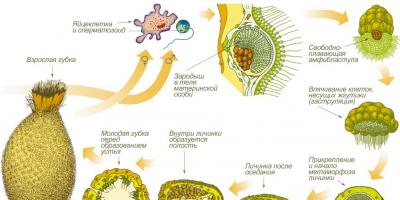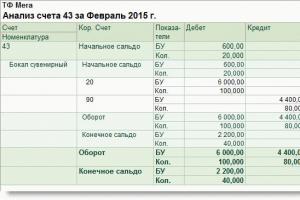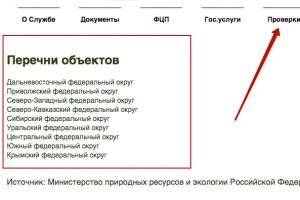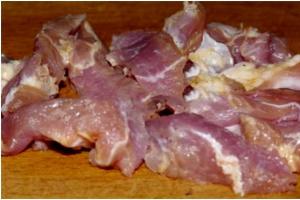The portable infrared tent heater is urgent need for lovers of active recreation. Using an IR emitter you can create comfortable conditions for an overnight stay during winter fishing, hunting or hiking.
When choosing an IR installation, you must Special attention Pay attention to the manufacturer, the type of fuel used and additional aspects that contribute to operational safety.
Is it possible to heat a tent with infrared?
The operating principle of heaters is based on the conversion of thermal energy into infrared radiation. As a result, even a portable camping gas infrared heater for a tent is capable of creating and maintaining a comfortable temperature. A metal or ceramic plate used as an emitter focuses the rays and directs them to surrounding objects.A small-sized tourist infrared gas heater for a winter tent uses a natural heating process, similar in structure to solar radiation. During the heating process, it is not the air that heats up, but the surface of objects. Excess thermal energy is removed through natural circulation. Under direct exposure to heat rays, a person feels a temperature approximately 10°C higher than that of the environment.
Mobile heaters are best option for fishermen and hunters, as well as those who, due to their occupation, often have to spend the night in a tent. Warmth is felt immediately after turning on the unit. The unit returns to normal operating mode after 4-6 minutes.
What types of camping IR heaters are there?
The operating principle used by IR heaters of different modifications generally differs little from each other. Therefore, when choosing suitable equipment You should pay attention to the type of fuel used.Domestic and foreign manufacturers traditionally produce burners that run on bottled and main gas, gasoline and kerosene. Each heater has its own disadvantages and advantages.
IR heater on kerosene and gasoline
Portable liquid fuel heaters for tourism have one nice feature: additional function: hob located at the top of the device. Using the installation, you can cook food without lighting a fire, heat water for tea, warm up gear and at the same time warm up a small tent.The Russian tourist gasoline IR heater for tents Pathfinder is popular. For the convenience of customers, the company that manufactures the heater offers a fully equipped camping kit.
The package includes:
- Dishes.
- Liquid fuel cylinder.
- For ease of transportation, a travel case is included.

The disadvantage of the compact kerosene infrared camping heater for the Pathfinder camping tent is its relatively low power.
IR gas heater
The heating area of gas heaters is significantly larger. Unlike gasoline burners, it is possible to heat a tent up to 15 m², in winter, when fishing or hunting. It is believed that gas devices- These are the most economical heaters.Judging by the positive reviews, the most popular emitters from the following manufacturers remain:
- Pathfinder - the manufacturer is considered one of the leaders in the production of equipment for tourism and fishing. The company offers modifications: Hephaestus, Hearth, Kemp, etc. The design includes piezo ignition, a gas supply control unit and other modifications that increase comfort during operation of the device.
The gas infrared heater Pathfinder, depending on the chosen model, can easily cope with heating a tent with an area of 5-15 m². - Siberian – a special feature of the device is that the catalytic element is made of ceramic. Gas combustion occurs inside the plate. The result is maximum operational safety.
The Sibiryachka tourist heater has a power of 1.12 kW, which is enough to heat a one- or two-person tent. You can purchase a more powerful 2.3 kW model. The light weight of the product is only 1.2 kg, making it easy to carry the burner if necessary.
Siberian is also used in industrial purposes, for heating garages, greenhouses, communal and agricultural premises.

All modifications can work from small ones gas cylinders, and by connecting to main pipeline. The pressure is adjusted automatically using a special reducer.
Which IR heater is better to choose for a winter tent?
IR heaters are somewhat similar to standard gas burners. The main difference in the design of the former is the operating principle used. Therefore, when choosing a suitable modification, you should pay attention to the following:- Correct location of the heater. Heating is carried out due to directed radiation. Everything that is not in the ray scattering zone will remain cold. Therefore, one of the main criteria for a high-quality emitter is the ability to change the angle of inclination. Tourist infrared gas heaters for tents are usually made on an adjustable tripod, which slightly increases the weight of the product.
- Emitter type - heating plate in which the flammable mixture, can be metal or ceramic. According to their own technical specifications The catalytic gas infrared ceramic tent heater is practically no different from its steel counterpart. The only difference is the longer service life of the first option.
- Type of fuel – gas and liquid fuel are traditionally used. The advantage of the latter is that after the gasoline runs out, it is easy to refill the fuel tank yourself. The disadvantage of liquid fuel burners is the high cost of gasoline. It is more economical to use gas.
- Heating area– an infrared gasoline burner-heater for a winter tent is the best option for those who are used to relaxing alone. The device has simple design, it's easy to install and run. For larger tents, it is better to choose a gas emitter.
Safety rules for heating a tent
Infrared heaters using kerosene, like gas, are highly safe. But to exclude possible unpleasant consequences, it is recommended to adhere to the following recommendations:- Ignition is performed only from the emitter side using a match or piezo ignition.
- Ventilation of the room - a certain amount of combustion products enters the air. The room must be ventilated to ensure sufficient air flow.
- It is prohibited to cover the emitters with clothing or other objects, or install the equipment near flammable materials, fuel cans, etc.
Are you going to spend the night in a tent in the forest or in the mountains? Then you need a good sleeping bag. It will take up some space in your backpack, but will provide you with warmth. It is best to purchase a special tent heater. With its help, you will create comfortable conditions in the tent space for a long overnight stay and an equally long day stay. The industry produces many portable heating devices, so there will be no problems purchasing them.
In this review we will look at:
- The main types of tent heaters;
- Features of certain heating devices;
- Equipment selection criteria.
After reviewing the material presented, you will be able to choose and purchase excellent equipment for heating tents.
Types of tent heaters
Portable heating devices fall into three main categories:
- Liquid;
- Gas;
- Catalytic.
You can make alcohol heaters yourself, for example from cans, but this is not the most safe way get warm.
Liquid models run on alcohol or purified gasoline. Alcohol candles are small candles that burn with a bright flame and provide warmth. The disadvantage of such a candle is the presence of an uncovered flame - in fact, in front of us is the very simple burner, like those found in chemical, biological and medical laboratories. Therefore, such a burner is not suitable for heating a tent in which people will sleep - the likelihood of a fire is too high.
Petrol tourist heater for a tent, which can be bought at many specialty stores, is a combination of a heating device and an ancient kerosene lamp. This symbiosis of two devices made it possible to create miniature devices that give good results - they quickly create a comfortable atmosphere in tents of almost any size, filling their space with life-giving warmth.
What's wrong with gasoline models?
- Low quality gasoline leads to unstable operation;
- Liquid fuel may accidentally spill, causing additional problems;
- Even the purest gasoline gives off a not very pleasant smell.
Nevertheless, gasoline stoves remain quite popular travel accessories.
The advent of compact gas cylinders led to the rapid development of all kinds of stove-heaters, used not only for heating tent volumes, but also for cooking. What can we find in specialized tourist stores?

Using a gas infrared heater, you can easily not only heat up food, but also cook it.
- Ceramic gas tent heaters operating on an infrared operating principle;
- Heaters with classic metal radiators;
- Heaters with built-in and plug-in gas cylinders.
Ceramic emitters provide a powerful flow of heat (due to infrared radiation absorbed by surrounding objects), requiring minimum costs gas for heating the tent. At first, these heating devices operate at full power, and then the intensity of combustion can be reduced. Compact stoves with metal emitters work in approximately the same way (they are less fragile, but also less efficient). Both devices are floor-mounted or come as attachments to cans.
There is also a division according to the type of gas cylinders - there are tent heaters with built-in cylinders and with connected ones (via a collet or a flexible hose with a reducer).
All of the above devices, to one degree or another, create combustion products of gaseous or liquid fuel. That's why tents must be ventilated. As for catalytic models, they heat due to exothermic chemical reaction fuel decomposition in the presence of a catalyst. Gas catalytic devices are not compact and are more suitable for heating large camping tents, but a gasoline catalytic tent heater can even fit in a pocket - it is aimed at small tent volumes.
Conventional stoves and burners, which do not have radiating elements, are not suitable for heating - they are focused on cooking. In addition, food can also be prepared on some ceramic floor models.
Which tent heater is best?

Such devices are great for heating tents. They are mobile, and their power is more than enough.
You can buy a tent heater at any store that sells tourism products. If there are no normal sales points in your locality, use the help of online stores - there are many online stores online that offer everything from shoes to multi-room camping tents. How to choose the right gas heater for a tent?
When choosing any goods, first of all it is necessary to answer the question - under what conditions they will be used and what is required of them? If you are faced with the task of heating a small one-room tent, feel free to choose a floor-standing gas heater or a model for mounting on a cylinder. The former are more powerful and safe, but the latter are characterized by mobility - their operation requires caution. But they benefit from compactness, which is very important on long autonomous trips.
Here the essence of the choice comes down to the following - if you travel by car, feel free to choose a floor-standing model. But for advanced and avid tourists who spend weeks wandering through forests and mountains, more compact models are suitable.
We recommend floor-standing gasoline and alcohol models to fishermen and those who live in a campsite, where there is always close access to fuel. But in long-term autonomous events, their operation will lead to the need to carry substantial reserves of gasoline with you. If you don’t want to deal with gas, we recommend using a catalytic tent heater. What's good about it?
- Many hours of work on 100 grams of gasoline;
- Compact size - this heater is somewhat similar to a small flask;
- No flame - work is carried out due to catalytic oxidation of fuel.
By pouring 50 grams of purified gasoline into the device, you can provide yourself with cozy and warm nights away from civilization. But for spacious camping tents such a heater will not be enough; here you will need floor-mounted portable models.
Spending the night in a tent is great. But when it’s cold outside, it requires special preparation, especially if children take part in the hike. Today we will find out what methods exist for heating a tent during the cold season. Let's start with the simplest and end with the most technologically advanced and costly.
Clothes and sleeping bag
An important role in the matter of heating is played by the tourist’s clothing, his mattress, and his clothes. If all these attributes are selected correctly and made with high quality, then they will be enough to comfortably spend the night in the autumn forest. However, with the arrival of real cold weather, such warmth will not be enough. There will also be little of it for children, and there are two reasons for this. Firstly, children get colder. And secondly, in their sleep they like to toss and turn and open up. Therefore, it is important to heat the entire tent.
By the way, if you are spending the night in, and in principle, and in any other case, try to make sure that the parts of your body are in contact with each other as much as possible. At a minimum, take your arms out of your sleeves. The principle of a mitten works here, which, as you know, warms (or, more correctly, retains body heat) much more effectively than a glove. To make the night in a sleeping bag warmer before severe cold sets in, it will help simple bottle With hot water, which you need to take with you in your bag. You will get a kind of heating pad.
Candles
The second easiest way is to heat the tent with candles. It will be suitable in the fall when you need to warm it up a little, but in winter candles will not be enough. A live fire in a tent is very dangerous, so it can only be used in two cases. The first is when you are awake and can monitor the burning of the candle and its vertical position. Typically, candles are used by winter fishing enthusiasts who set up a tent not for sleeping, but for protection from wind and precipitation. Well, the second case is when the candle is in a safe burner. The design of such a burner was invented by tourists. You just need to take the metal shell from an old flask thermos and put the candle in it. This burner has a number of advantages. Firstly, if the thermos falls, the candle will remain in it and will not cause harm. Secondly, the candle heats the thermos, which means the heat transfer surface increases significantly.

Stones
Heating a tent using a stone/stones - old way, characterized by its simplicity and reliability. It is suitable for stronger cold weather than the previous two. But here, as in everything, there are some nuances.
If you just take a heated stone and bring it into the tent, it will be hot, but not for long. In just an hour the stone will cool down and the cold will set in again. The first way to increase the cooling time of the stone is to place it in a kettle and cover it with a lid. Such a simple manipulation will heat the tent for three hours, but this is not enough for a comfortable sleep. It is necessary to slow down the heat transfer of the stone so that it remains hot for at least 6-8 hours. For these purposes, a simple aluminium foil. It is non-flammable, lightweight and very compact. If you wrap the stone in several layers of foil, it will cool much more slowly and will not create stuffiness in the first hours of cooling. Heat will be retained due to the air gap between the layers. If you feel that it is getting cold in the tent, simply remove one layer of foil.
A hot stone can burn through the bottom of the tent, so it is placed in a kettle or saucepan. It is good if the stone gets stuck in the socket of the container and does not heat its bottom. Otherwise, you need to put a wooden plank under the pan. Another important nuance: Do not heat the stone too intensely in the fire. Due to a sharp temperature change on the surface and inside, it may crack.
A canister of hot water works like a stone. Only heat transfer occurs much faster.
Warming up the earth
Now we’ll find out how to heat a tent while camping in severely cold conditions. An old and reliable way is to put up a tent on the site of the fire. There are two options here. The first takes more time and energy. First, in the place where the tent will be installed in the future, you need to remove the turf. You should dig to a depth of 20 centimeters. Then a huge fire with wide logs is built in this pit. The main goal at this stage is to dry and warm the earth, as well as to obtain large coals. When the coals are ready, they are evenly distributed over the pit and covered with a 7-10 cm layer of earth. It is important that the soil is dry. If there is none, you need to use the second method given below. Dry grass or spruce branches are laid on the ground, and a tent is placed on top. The tent is heated throughout the night.
The second option is less energy intensive. In this case, there is no need to dig a hole. All you need to do is light a large fire, and when it burns out, carefully remove the coals to the side. Spruce branches are laid on the ground hot from the fire and a tent is pitched.
Heating a tent using a pipe
Let's move on to more sophisticated and technologically advanced methods. To bring this idea to life, you need to take 5-6 meters of duralumin pipe with you on a hike. It can be divided into meter sections for convenient transportation. It’s even better to take pieces of different diameters and stack them on top of each other. But do not forget about the seal at the joints, otherwise all the heat will escape into the air. The weight of such a set will not be significant at all.
So, to begin with, a fire is lit a few meters from the entrance to the tent. The pipe is placed on the fire so that one end goes into the tent, and the other protrudes beyond the flame so that smoke does not enter it. The end of the pipe that goes into the tent should be 1.5 meters higher than the second end. This design works very simply: cold air, entering the pipe, heats up and rises, entering the tent. The steeper the slope of the pipe, the more air will circulate. And the closer the fire is to the tent, the hotter this air will become.
To provide yourself efficient heating, you can go further and make two holes, as in the picture below. The first is needed to protect the tent from fire, and the second is needed to ensure good airflow. If it's too hot in the tent, you can simply close the pipe.

Heating a tent using the above methods requires energy and time. In conditions where you move to a new place every day and get very tired, this is completely inconvenient. It is also inconvenient if there are children in the hiking group. Therefore, many people prefer to use modern technologies. We'll talk about them below.
Gas heater
- a simple design device that has compact dimensions and does an excellent job of heating the tent. By itself it works very unproductively. It simply heats the air, which is mixed due to natural convection. To make a real heater, a special nozzle (working fluid) is put on the burner, which accumulates heat and gradually releases it to the air. It is the nozzle on the gas burner for heating the tent that determines the type of device. Nozzles are available in metal and ceramic. In addition to nozzles that work in tandem with the burner, there are independent heaters, which also have a metal or ceramic structure as a working fluid. Let's take a closer look at each type.Heater with metal working fluid
Such a camping heater can be either an attachment to a gas stove or independent device. The first option requires special care, because its hot surface is usually not protected. Therefore, it is not recommended to leave such a heater overnight.

Self-contained structures are more suitable for heating a tent at night. They are more stable on the surface and have protection of the danger zone from external objects. Such heaters may have one or two independent burners. Thanks to the parabolic reflector (reflector), the working fluid can be directed in the desired direction. There are a lot of such heaters on sale, both foreign and domestic. The advantages of the device are simplicity of design, low cost, safety. Disadvantages - low return, insufficient efficiency.
Heater with ceramic working fluid
This type of portable heater has stronger heat dissipation and is therefore more economical. The combustion process takes place on the surface of a ceramic plate, which has a shape similar to a honeycomb. Heat is removed much more efficiently than with an open flame. Up to 50% of combustion energy is converted into thermal radiation. The advantages of ceramic burners are efficiency, compactness, unpretentiousness, a little carbon monoxide is released during operation, and directional action. Unfortunately, domestic heaters are inferior to imported ones on all fronts.
Gasoline heater for tent
Gasoline heaters work on the same principle as gas heaters. The main advantages of such products are availability and ability to work in any weather. A gas burner for heating a tent at a temperature of -5 degrees and below begins to malfunction. However, along with all the advantages, gasoline heaters also have significant disadvantages. The main one is danger. If used incorrectly, the cylinder can cause serious harm. And the fuel itself - gasoline - requires careful transportation.

Safety precautions when working with gas and gasoline heaters
When using these products in a tent, you should pay special attention to the following safety rules:
1. The tent must have at least some ventilation to remove combustion products.
2. The tent heater should be positioned at least half a meter from the wall.
4. It is advisable to have sleeping area at a height of up to 25 cm from the floor. Carbon monoxide heavier than air, so it accumulates at the bottom.
5. Only special cylinders that are equipped with automatic protection are suitable for use in a tent. It blocks the gas supply if the burner goes out or overheats. The cylinder must also have a certificate authorizing its use in residential premises.
6. The heater must be installed on a non-combustible base with an area at least 30% larger than the burner area.

Well, the most effective way to heat a tent is to put a stove in it. This is the method used in army tents. Of course, it has more modest dimensions than the army one, but the essence is the same. This heating method is not suitable for a small tent. You will have to tinker with the stove, but the result will be more than worthy. There are few such products on the market, but they still exist. And some even adapt to gas and gasoline. The stove, as a rule, comes complete with a collapsible chimney. It is made of light metal and does not weigh much at all. Advantages of the stove - it provides a lot of heat, it has a simple, but reliable design hoods, inexpensive, does not require refueling.

Conclusion
Today we found out how to heat a tent while camping. There are many ways to make camping life more comfortable and safer, starting with the use simple candles and ending with full-fledged stoves. Which of this variety to choose depends on the time of year, place of vacation, composition of the group and the personal characteristics of each person. Some people wear a T-shirt in winter and sleep in one sleeping bag, but for others a stove wouldn’t hurt even in the summer.
Heating a winter tent is an extremely important topic. Both the possibility of fishing in the cold season and its results directly depend on the warmth inside the fishing shelter. In this review article we tried to collect all the known options for heating a tent for winter fishing- with the obligatory indication of the disadvantages and advantages of each of them. With all that, we tested and evaluated some of the methods personally, which will also be mentioned in the following narrative.
Solid fuel mini-stove
Long gone are the days when modern portable gas stoves, and primus stoves were rare. Fishermen at that time used homemade mini-stoves to heat their winter tents - welded from sheet iron, or hastily welded together from some metal containers. Such stoves usually ran on wood, although other things could be used. solid fuel, for example - coal.
One of my acquaintances, a railway worker, an avid bream fisherman in the world, in the late 80s regularly fished in our surrounding reservoirs - the Revda city pond and. He was heating his tent homemade stove on coal. According to his reviews, “it was so hot that I was sitting in a T-shirt.”
There were a great variety of designs for these stoves. Here, as they say, who was good at what. However, the principle was the same everywhere - a firebox, a stand (so as not to melt the ice) and a chimney pipe that went outside through a special hole in the wall of the tent, edged with non-flammable material like fiberglass. Simply put, a miniature potbelly stove.
 Nowadays, mini-stoves are being pushed out of use by more efficient and compact devices for heating a tent. However, this does not mean that no one heats their tent with wood these days. In rural areas, especially in some villages far from cities, this is still a very popular method, sometimes the only possible one.
Nowadays, mini-stoves are being pushed out of use by more efficient and compact devices for heating a tent. However, this does not mean that no one heats their tent with wood these days. In rural areas, especially in some villages far from cities, this is still a very popular method, sometimes the only possible one.
- Pros: cheap or free fuel, good calorific value.
- Minuses: cumbersome design, complete uselessness in the absence of firewood in the fishing area, the need for large quantities fuel (the aforementioned acquaintance carried a medium bucket of coal on fishing trips). In addition to this, I had to periodically throw firewood into the stove, distracting myself from fishing.
Primus

With the advent of “lights”, “bumblebees” and other gasoline burners, wood stoves began to gradually fade into the background. And for quite a long period of time, fishing tents were heated with primus stoves. Even now there are still many adherents of this method.
On several fishing trips I had the opportunity to use a rather consumer-grade primus "Dastan". I will say this: power. This is probably the most warm way heating a winter tent, and even preliminary fuss with lighting the primus stove, as well as some stench of fuel, does not overshadow this fact.
- Pros: compactness, excellent calorific value.
- Minuses: difficulty to use. And to this day there are legends about the “reliability” of Primus stoves, but here - again - it all depends on the manufacturer, specific model and a specific product. For example, imported Primus stoves are quite well made, as are some Soviet ones.
Liquid fuel burners (multi-fuel)

In fact, these are the same Primuses, only a high-tech version. They are devoid of most of the disadvantages of “bumblebees”; you can also use all sorts of afterburner diffusers with them (which you cannot install on a regular primus stove), thereby increasing their efficiency.
- Pros: excellent calorific value, versatility in terms of fuel used.
- Minuses: high price.
Gas stove with five-liter propane cylinder
Another old proven method of heating a tent, which is still in full use today. If the cylinder is left outside, the tile itself takes up very little space.
A fisherman I know has been using this tile for a long time, and it doesn’t blow his mind.
- Pros: long operation from one refill, excellent calorific value (models existing on the market are very powerful), greater reliability and safety compared to a Primus stove.
- Minuses: the bulkiness of the structure and its increased weight, the likelihood of gas freezing in severe frosts (especially if the cylinder did not contain pure propane, but its mixture with other gases).
Gas stove or heater with disposable cylinders

They appeared relatively recently and have gained quite a bit of popularity. They could even supplant other methods of heating tents, if not for one significant drawback, which is discussed below.
The author of this article actively uses a gas heater (with a power of about a kilowatt) during winter fishing, and knows fishermen who also heat themselves with similar equipment. Previously, I had to use the tiles several times - they heat quite well.
 One could also include in this category gas lamps
, however, their calorific value leaves much to be desired, so if they are suitable for heating a winter tent, it is only during mild cold weather.
One could also include in this category gas lamps
, however, their calorific value leaves much to be desired, so if they are suitable for heating a winter tent, it is only during mild cold weather.
- Pros: compactness; you can also add accessible and relatively inexpensive fuel here.
- Minuses: the main thing is the likelihood of gas freezing even in light frosts (thin-walled canisters are designed for gas mixtures with lower vapor pressure, evaporating at higher high temperatures). How to deal with this is written in. On top of that, some stoves and heaters are very limited in power, which somewhat reduces their effectiveness during severe frosts.
Paraffin candles

The power of one candle is about 40 watt/hour. Not such a small figure. It turns out that four dozen candles can easily compete in the heat generated with a portable gas heater.
The author of these lines more than once had to heat a fishing tent with ordinary candles. It’s safe to say that this method works great in mild frosts with the right number of candles: the holes don’t freeze, and it’s quite comfortable in the tent.
- Pros: lighting, simplicity, no need for additional equipment.
- Minuses: low power(the stronger the frost, the more candles you need).
Dry fuel
Some types of dry fuel, for example, “dry alcohol” tablets, burn for 10-15 minutes without soot or odor. The specific heat of combustion of this fuel is 30 mJ/kg, which corresponds to 8.3 kilowatts. You can go further and calculate the “power” of one tablet. It is approximately 332-498 W/h. Therefore, dry fuel can be used to heat a winter tent.
A fisherman I know once had the opportunity to heat a tent with dry fuel while winter fishing (on a river), and not just anyhow, but during an overnight stay. I took a lot of tablets with me - several packages, but only three were needed for heating. It was not possible to freeze at that overnight stay (considering that the thermometer outside did not drop below -10°C). How to get proper sleep.
- Pros: high calorific value, ease of use.
- Minuses: the need to be distracted every 15-20 minutes to light a new tablet. It is possible that this problem could be solved by a special stove, where several tablets could be loaded at once, and then the combustion process could be “stretched out” by limiting the oxygen supply. However, no one has invented it yet.
Alcohol

The specific heat of combustion of alcohol is 27 mJ/kg - this is almost half that of natural gas, but it is quite enough to use alcohol as fuel for a tent heater. And some fishermen - who have constant access to supplies of this substance - do just that, using homemade alcohol lamps from tin cans. Nevertheless, most fishermen consider this approach to be unreasonably wasteful, or even blasphemous, and it is clear for what reason.
- Pros: good calorific value.
- Minuses: relatively high cost of fuel, or difficulties in acquiring it.
The fisherman himself
The human body, it turns out, can also be considered as a heater. When at rest, it emits an average of 60 watts of heat per hour. Therefore, with a small “minus” - after installing the tent - the holes usually stop freezing, and a heater is not required.
- Pros: nothing additional is needed.
- Minuses: low power, sufficient only for “warm” winter weather.
Sun

To some this point may seem even more frivolous, but in fact Sun rays have a very high calorific potential. Especially considering the fact that during winter in our hemisphere the Earth is at its closest distance from the Sun.
On clear, windless days - even in 30-degree frosts - you can notice the appearance of icicles on dark objects partially covered with snow. This is due to the fact that the sun heats them to a low above-zero temperature, at which the snow begins to melt. And the temperature difference here clearly exceeds 30 degrees, which is quite a lot.
The sun also slightly warms up the fishing tent, although with a very tiny part of the heat of its rays. And the lion's share of this heat is dissipated into the external space - due to reflection from the fabric and its cooling by the cold air constantly circulating outside.
Somehow it is necessary to direct the sun's heat inside the tent, but at the same time minimize its return to the outside. The prospects for this heating method are obvious, and it is quite feasible even with modern technologies. But so far there are no practical developments in this direction. Who will do this?
- Pros: free energy.
- Minuses: useless in cloudy weather and at night. Well, as mentioned above - at the moment, full use solar heat for heating a winter tent - just a theory. But in practice, it turns out that in sunny weather we have a small bonus - five degrees to the main heating source, be it a stove, kerosene stove, burner, or heater.
Hello, dear readers of the site. The topic of heating a tent in winter is extremely relevant for those who like to go fishing from the ice - as they say, fish like fish, and the comfort and pleasure from the process has not been canceled either. When the frost gets stronger and the wind blows so hard that warm clothes do not help, many fishermen make a decision .
The very first fishing trip with a tent will give you an idea - how to heat a tent during winter fishing? How to insulate, what heating devices are best to use? This article aims to cover the topic of heating and answer these questions.
Statement of the problem of heating a tent for fishing in winter
Selecting a heating device is a two-level task:
- Deciding on the size of the heated tent— it will be single-person or for a team of fishermen (since tents are often made square, 4 people is the standard). The required heater power sets a set possible options burners, stoves and other devices.
- Choosing a unit for heating a winter tent- the most critical stage, as it is associated with financial costs and the fisherman’s hope for a happy, safe and, most importantly, long-term use of the heating device.
Personally, I have experience using winter fishing tents of both sizes, so I’ll briefly talk about each type of tent and possible devices heating
Heating a single tent for winter fishing
I started with a self-unfolding tent for 500 rubles (traditional purchase at Chinese market) shown in the photo:
Let me explain right away: although this tent is formally a two-person tent, there is only enough room for one person to fish in it. The tent has been modified with a three-meter zipper, which allows you to unzip and bend a segment of the bottom to access the holes. As a rule, two holes were used both in freshwater reservoirs and at sea, for flounder. This tent is enough for one to three seasons. I tried many heating options in this tent and came to one, but everything was in order.
Heating the tent with stoves and burners based on gas cartridges
In Primorye and surrounding regions (up to the Vologda region), Chinese portable gas canisters with liquefied gas. Prices for cans are rising, but they don’t go too far - the popularity of cans is not subsiding.

Gas cans and burners for heating a tent in winter
The tempting cost of burners and simplicity are the panacea for heating in winter fishing tents! But that’s not the case - in the garage and at home, gas and burners of this type are relevant, but as soon as things go below -10-15 degrees Celsius, these devices will let you down. The can freezes and requires heating to work.
I share my experience, but before my eyes are the memories of how at 5 in the morning after setting up the tent in a mad wind, I pinned my hopes on heating from gas burner, and lit it in vain - it gave me chills.
The burners provide a lot of heat, but extremely fire hazardous! Even in mild conditions (10 degrees below zero and above), the burner can sneeze with emissions of gas and, accordingly, fire. When transporting, the burner should be carefully isolated from other things - a speck may get into it and heating will end before it begins. Before my eyes, one friend tried to clean his burner, and as a result his eyebrows disappeared... It could have been worse.

Gas stove on cans - great option only in summer
The option of a gas stove in a convenient black suitcase looks tempting - you can warm up, boil some coffee, or even fry some fish. But gas cartridges lead to the same troubles as with burners - they don’t work in the cold. The cylinders require systematic heating, and they hiss ominously when heated over an open fire.
A fisherman I know, when heating a tent, found this way: he took two cylinders from the package - one he inserted into the tile, and the second he hid in his bosom. As soon as the fire on the burner weakened, he replaced it. However, an icy belt forms on the gas level of the canister; it can “damage” your well-being, and in general, sitting with an icy layer under a winter suit is a debatable pleasure.
There are options for solving the problem of a gas canister freezing. Watch a short video about heating a tent while fishing in winter using gas from a small cylinder with one of these options:
To sum it up: burners and hotplates are pampering; to heat a tent in winter you need something more reliable.
Let's move on to the next option - liquid fuel stoves, alcohol lamps, burners.
Heating the tent with liquid fuel stoves and burners
Many devices using kerosene and gasoline are produced by industry. The domestic (often Soviet) “Bumblebee” and “Ogonyok”, as well as the imported “Coleman” and, of course, Chinese ones, are widely used.
Gasoline and kerosene burners and kerosene stoves for heating a tent in winter
I used Bumblebee - the orange one in the picture. Everything about it is great: it burns well, it’s frost-resistant, it’s convenient to cook food and warm up a tent. Perhaps I would recommend that you also get one, like other storytellers on the topic “How to heat a tent.” But there is experience not of a sofa nature, but of a fishing one, both at sea and on the river. He says that the disadvantages of gasoline and kerosene stoves are strong:

Kerosene lantern-heater for a winter tent
- There is a need carry a can of fuel(It’s not for me to tell you about the price of good, reliable canisters). One and a half liters, five liters are a temporary solution that brings the smell of gasoline (kerosene) and a non-zero probability of leakage.
- Hand contact with fuel is inevitable. Wearing gloves when working with primus parts is practically fantastic, which means you will smell of gasoline or kerosene!!! No, not for fishermen (I wiped my hands and it seemed fine), but for fish. You adjust the light, adjust the bait (worm, scallop or shrimp) with your hand and begin to tell: “ At first it didn’t bite, but then it cut off...«.
- Gasoline and kerosene are higher hydrocarbons than gas, often burn with soot and soot on pots and kettles. And frankly speaking, the smell in tents with such heating is not very good. You will get used to it, but an outside observer will feel the smell immediately. The houses will be so full of clothes and all the fishing equipment that there is no need to talk further.
I will highlight kerosene lantern heaters as a separate tempting category. It will heat a single tent and provide light for the hole - just fantastic! But they fully have all the disadvantages described above. These problems aren’t just made up out of thin air; I’ve encountered them myself. No matter how carefully you use gasoline and kerosene heaters for a fishing tent in winter - the fish will know about it!
Heating a tent with devices based on dry fuel
Dry fuel is suitable for heating a tent and cooking food, however, if you are not the head of a warehouse with dry rations and an unlimited supply of fuel tablets, you will have to purchase large enough volumes of tablets (briquettes) in order to keep warm all night. It’s simply inconvenient and dangerous to use, constantly add, control... To heat food - yes, to heat a tent - no.
Using candles to heat a tent

We have reached a very interesting, trouble-free and quite effective way heating a single tent. The candle is ideal for heating small tents in any environment. If the frost is not severe, then Gelendzhik in a tent will be created by an ordinary tea or paraffin candle.
If the frost is stronger than -15 degrees, then such a candle is enough to create a thermal buffer zone in the upper part of the tent. We took out the fish, wet our hands, raised it up for a few seconds and it was done. There will be objectors, of course, but I checked it myself - it’s enough to warm up your limbs at -30, but what else is needed? After all, they didn’t come to the ice wearing sneakers.
While I was traveling with a one-person tent, I always used these candles for heating - they are inexpensive, burn for a long time, and provide enough warmth. Many devices have been invented to accumulate heat from candles. For example, here are short but succinct videos about making a candle-based heater with your own hands:
I didn’t make a stove, I took paraffin candles and a candlestick - and there was enough light and warmth at night.








